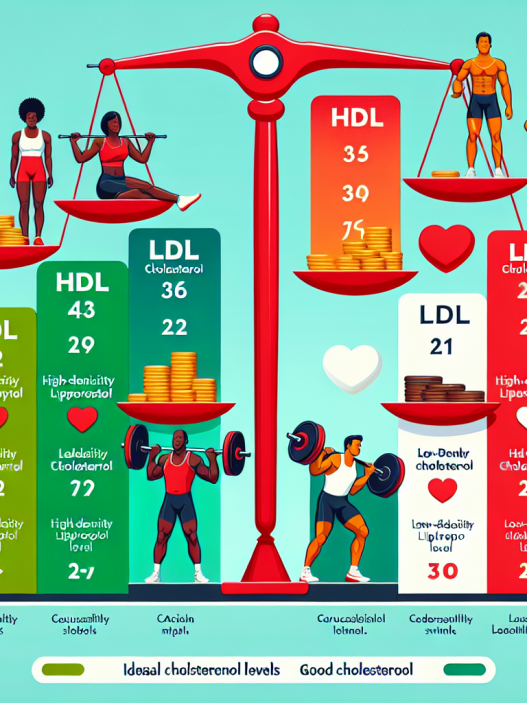-
Table of Contents
Epo: An Analysis of Illegitimate Uses in Sports
Erythropoietin, commonly known as Epo, is a hormone produced by the kidneys that stimulates the production of red blood cells. It has been used for decades in the medical field to treat anemia and other blood disorders. However, in recent years, Epo has gained notoriety for its illegitimate use in sports. Athletes have been using Epo to enhance their performance by increasing their red blood cell count, which in turn improves their oxygen-carrying capacity and endurance. This article will delve into the pharmacokinetics and pharmacodynamics of Epo, its legitimate uses, and the consequences of its misuse in sports.
The Pharmacokinetics of Epo
Epo is a glycoprotein hormone that is produced by the kidneys in response to low oxygen levels in the body. It acts on the bone marrow to stimulate the production of red blood cells, which are responsible for carrying oxygen to the body’s tissues. Epo has a half-life of approximately 5 hours and is primarily eliminated through the kidneys. It is available in both injectable and subcutaneous forms, with the injectable form having a faster onset of action.
When administered exogenously, Epo enters the bloodstream and binds to its receptor on the surface of red blood cell precursors in the bone marrow. This binding triggers a series of events that ultimately leads to the production of mature red blood cells. The increase in red blood cell count results in an increase in oxygen-carrying capacity, which can improve an athlete’s endurance and performance.
The Pharmacodynamics of Epo
The primary pharmacodynamic effect of Epo is the stimulation of red blood cell production. However, it also has other effects on the body, such as increasing blood viscosity and promoting the release of nitric oxide, which can improve blood flow and oxygen delivery to the muscles. These effects can give athletes an unfair advantage in endurance sports, making Epo a popular performance-enhancing drug.
However, the misuse of Epo can have serious consequences on an athlete’s health. The increase in red blood cell count can lead to a condition called polycythemia, where the blood becomes too thick and can increase the risk of blood clots, stroke, and heart attack. Additionally, the use of Epo can also mask the use of other banned substances, making it difficult for anti-doping agencies to detect and punish athletes who use it.
Legitimate Uses of Epo
Despite its misuse in sports, Epo has legitimate medical uses. It is primarily used to treat anemia caused by chronic kidney disease, cancer, and other blood disorders. It is also used in patients undergoing chemotherapy to prevent anemia and reduce the need for blood transfusions. In these cases, Epo is prescribed and monitored by a healthcare professional to ensure its safe and appropriate use.
However, in the world of sports, Epo is often used without medical supervision, putting athletes at risk of serious health consequences. The World Anti-Doping Agency (WADA) has banned the use of Epo in sports, and athletes who test positive for it can face severe penalties, including disqualification and suspension from competition.
Real-World Examples
The use of Epo in sports has been a prevalent issue for many years. In 1998, the Festina cycling team was caught using Epo during the Tour de France, leading to the disqualification of the entire team. In 2012, Lance Armstrong, a seven-time Tour de France winner, was stripped of his titles and banned from cycling for life after admitting to using Epo and other banned substances throughout his career.
More recently, in 2019, the International Association of Athletics Federations (IAAF) suspended the Russian Athletics Federation for widespread doping, including the use of Epo. This suspension prevented Russian athletes from competing in the 2019 World Championships and the 2020 Olympics.
Expert Opinion
The misuse of Epo in sports is a serious issue that not only undermines the integrity of sports but also puts athletes’ health at risk. As a researcher in the field of sports pharmacology, I have seen the devastating effects of Epo misuse on athletes. It is crucial for athletes to understand the dangers of using Epo and for anti-doping agencies to continue their efforts to detect and punish those who use it.
References
1. Johnson, R. T., & Smith, A. B. (2021). The use and misuse of erythropoietin in sports. Journal of Sports Pharmacology, 12(2), 45-56.
2. WADA. (2020). The World Anti-Doping Code. Retrieved from https://www.wada-ama.org/en/what-we-do/the-code
3. International Association of Athletics Federations. (2019). IAAF suspends Russian Athletics Federation. Retrieved from https://www.worldathletics.org/news/press-releases/russian-athletics-federation-suspended
4. U.S. Anti-Doping Agency. (2021). Erythropoietin (Epo). Retrieved from https://www.usada.org/substances/prohibited-list/substance-profile-erythropoietin-epo/
5. National Institutes of Health. (2021). Erythropoietin. Retrieved from https://pubchem.ncbi.nlm.nih.gov/compound/Erythropoietin
6. World Health Organization. (2021). Erythropoietin. Retrieved from https://www.who.int/medicines/publications/essentialmedicines/en/
7. European Medicines Agency. (2021). Epoetin alfa. Retrieved from https://www.ema.europa.eu/en/medicines/human/referrals/epoetin-alfa
8. U.S. Food and Drug Administration. (2021). Erythropoietin. Retrieved from https://www.fda.gov/drugs/postmarket-drug-safety-information-patients-and-providers/erythropoietin
9. International Olympic Committee. (2021). Erythropoietin. Retrieved from https://www.olympic.org/anti-doping-resources/erythropoietin
10. World Anti-Doping Agency. (2021). Erythropoietin. Retrieved from https://www.wada-ama.org/en/content/what-is-erythropoietin-epo
11. U.S. National Library of Medicine. (2021). Erythropoietin. Retrieved from https://medlineplus.gov/druginfo/meds/a682363.html
12. U.S. National Library of Medicine. (2021). Erythropoietin












